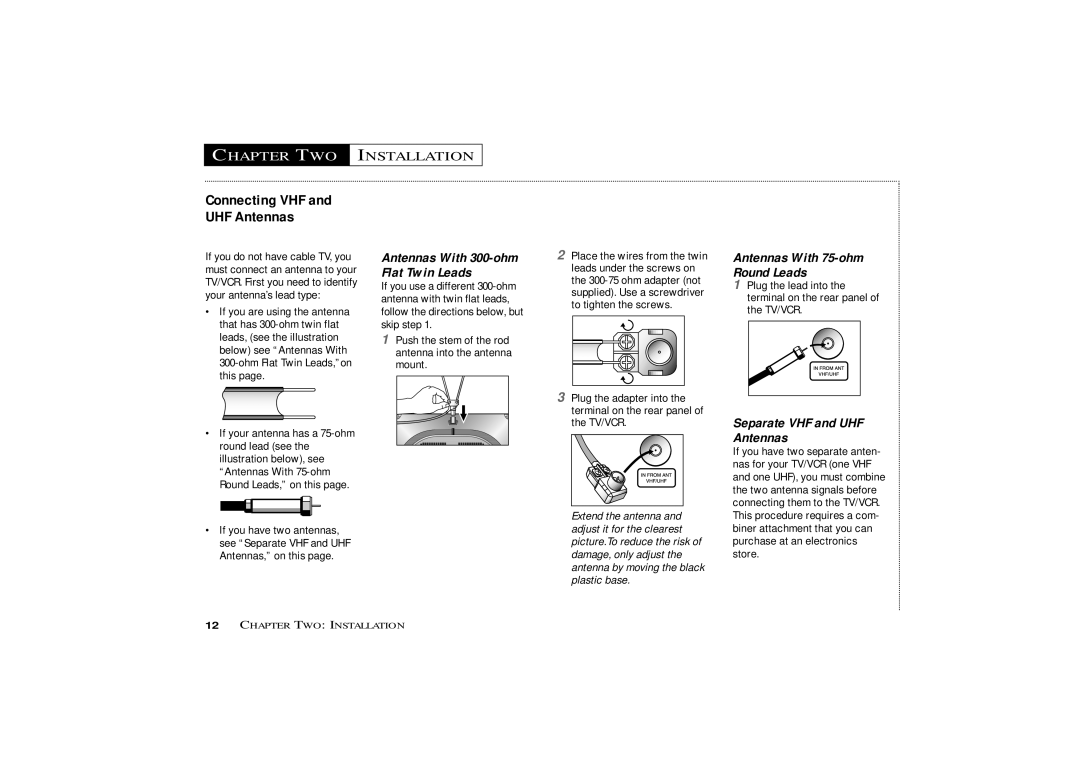
CHAPTER TWO INSTALLATION
Connecting VHF and
UHF Antennas
If you do not have cable TV, you must connect an antenna to your TV/VCR. First you need to identify your antenna’s lead type:
•If you are using the antenna that has
•If your antenna has a
•If you have two antennas, see “Separate VHF and UHF Antennas,” on this page.
Antennas With 300-ohm Flat Twin Leads
If you use a different
1Push the stem of the rod antenna into the antenna mount.
2Place the wires from the twin leads under the screws on the
3Plug the adapter into the terminal on the rear panel of the TV/VCR.
Extend the antenna and adjust it for the clearest picture.To reduce the risk of damage, only adjust the antenna by moving the black plastic base.
Antennas With
1Plug the lead into the terminal on the rear panel of the TV/VCR.
Separate VHF and UHF Antennas
If you have two separate anten- nas for your TV/VCR (one VHF and one UHF), you must combine the two antenna signals before connecting them to the TV/VCR. This procedure requires a com- biner attachment that you can purchase at an electronics store.
12CHAPTER TWO: INSTALLATION
